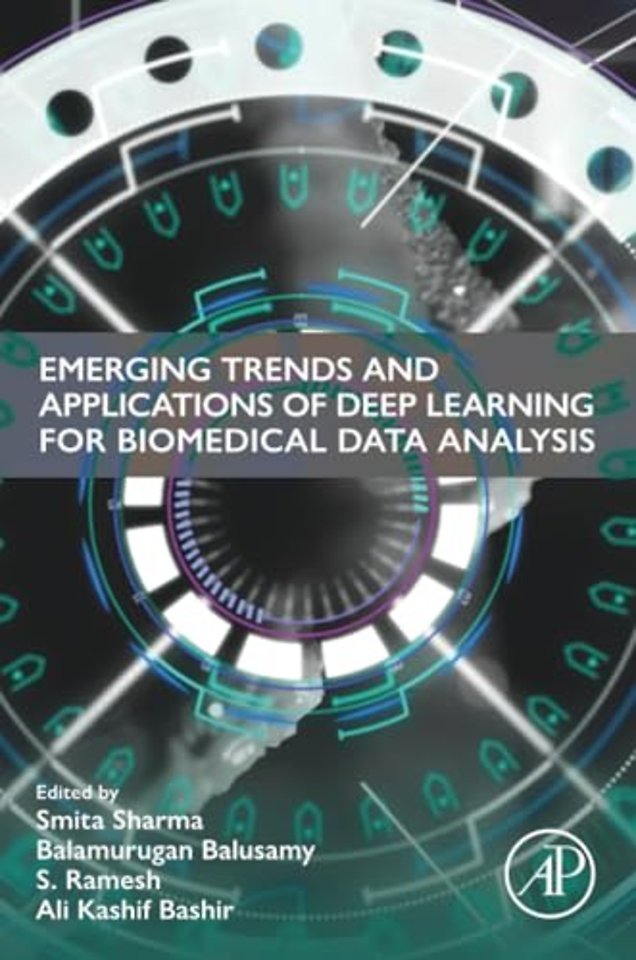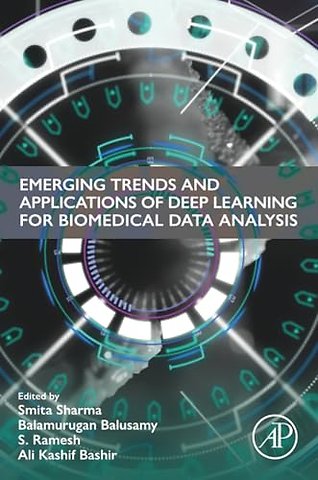1. Deep learning, artificial intelligence, and bioinformatics promises innovations and imminent forecasts in SARS-COVID-19 genome data analysis<br>S. Sheik Asraf, P. Nagaraj, and V. Muneeswaran<br><br>1.1 Introduction<br>1.2 COVID-19—a global pandemic<br>1.3 Genomics of COVID-19<br>1.4 Applications of deep learning in COVID-19 genomics studies<br>1.5 Role of artificial intelligence in COVID-19 genomics research<br>1.6 Usage of bioinformatics tools, software, and databases in COVID-19 genomics investigation<br>1.7 Challenges and prospects of deep learning, artificial intelligence, and bioinformatics in COVID-19 genomics<br>1.8 Conclusion<br>References<br><br>2. Integration of IoT and AI for potato leaf disease detection: enhancing agricultural efficiency and sustainability<br>E. Senthamil Selvi and S. Anusuya<br><br>2.1 Introduction<br>2.2 Literature survey<br>2.3 Classification process for potato leaf diseases<br>2.4 Image preliminary processing<br>2.5 Image augmentation<br>2.6 Feature extraction<br>2.7 Evaluation and recognition<br>2.8 Methods and materials<br>2.9 Transfer learning<br>2.10 Pretrained network model<br>2.11 Proposed model<br>2.12 Result and discussion<br>2.13 Conclusion<br>2.14 Future work<br>References<br><br>3. A hybridized long–short-term memory networks-based deep learning model using reptile search optimization for COVID-19 prediction<br>Balakrishnama Manohar, Raja Das, Potharla Ramadevi, and Balamurugan Balusamy<br><br>3.1 Introduction<br>3.2 Materials and methods<br>3.3 Data preprocessing<br>3.4 Data normalization<br>3.5 Proposed methodology<br>3.6 Methodology<br>3.7 Reptile search algorithm<br>3.8 Encircling phase (global search or exploration)<br>3.9 Hunting phase (local search or exploitation)<br>3.10 Optimized long–short-term memory networks-reptile search algorithm model<br>3.11 Model evaluation<br>3.12 Results<br>3.13 Conclusion<br>References<br><br>4. Improving coronavirus classification accuracy with transfer learning and chest radiograph analysis<br>M. Lakshmi, Raja Das, Balakrishnama Manohar, and Balamurugan Balusamy<br><br>4.1 Introduction<br>4.2 Related works<br>4.3 Materials and methods<br>4.4 Results and discussion<br>4.5 Conclusion<br>References<br><br>5. A hybrid deep neural network using the Levenberg–Marquardt algorithm applied to the nonlinear magnetohydrodynamic Jeffery–Hamel blood flow problem<br>Priyanka Chandra, Raja Das, and Smita Sharma<br><br>5.1 Introduction<br>5.2 Mathematical modeling<br>5.3 Solution methodology<br>5.4 Result and discussion<br>5.5 Conclusion<br>Ethical statement<br>Acknowledgment<br>Declaration of interest statement<br>Funding<br>Data availability statement<br>References<br><br>6. An image segmentation method using intuitionistic fuzzy k-means and convolutional neural networks in multiclass image classification<br>Potharla Ramadevi, Raja Das, M. Lakshmi, Balakrishnama Manohar, and Smita Sharma<br><br>6.1 Introduction<br>6.2 Related works<br>6.3 Methodology<br>6.4 Results and discussion<br>6.5 Conclusion<br>References<br><br>7. Deep learning for wearable sensor data analysis<br>P. Aakash Kumar, Abha Rani, S. Amutha, and B. Surendiran<br><br>7.1 Introduction<br>7.2 Literature review<br>7.3 Methodology<br>7.4 Result and discussion<br>7.5 Conclusion<br>References<br><br>8. Unveiling emotions in real-time: a novel approach to face emotion recognition<br>Gowthami V. and Vijayalakshmi R.<br><br>8.1 Introduction<br>8.2 Convolutional neural network<br>8.3 Objective<br>8.4 Literature survey<br>8.5 Proposed work<br>8.6 Pseudocode for training the model<br>8.7 Results<br>8.8 Future work<br>References<br>Further reading<br><br>9. Unleashing the power of convolutional neural networks for diabetic retinopathy detection in ophthalmology<br>Gowthami V. and K. Alamelu<br><br>9.1 Introduction<br>9.2 Literature review<br>9.3 System methodology<br>9.4 Result and discussion<br>9.5 Conclusion and future work<br>References<br><br>10. Case studies and use cases of deep learning for biomedical applications<br>Amutha Prabakar Muniyandi, Padmavathy T., and Balamurugan Balusamy<br><br>10.1 Introduction<br>10.2 Impact of deep learning in bio-engineering<br>10.3 Evolution of artificial neural networks<br>10.4 Applications of deep learning—bioinformatics<br>10.5 Explainable artificial intelligence in bioinformatics<br>10.6 Conclusion<br>References<br><br>11. A convolutional neural network-based deep ensemble method for computed tomography scan image-based lung cancer diagnosis<br>R. Jothi, Shravani Swaroop Urala, and K. Muthukumaran<br><br>11.1 Introduction<br>11.2 Related work<br>11.3 Dataset<br>11.4 Methodology<br>11.5 Experimental results and discussion<br>11.6 Conclusion<br>References<br><br>Index

